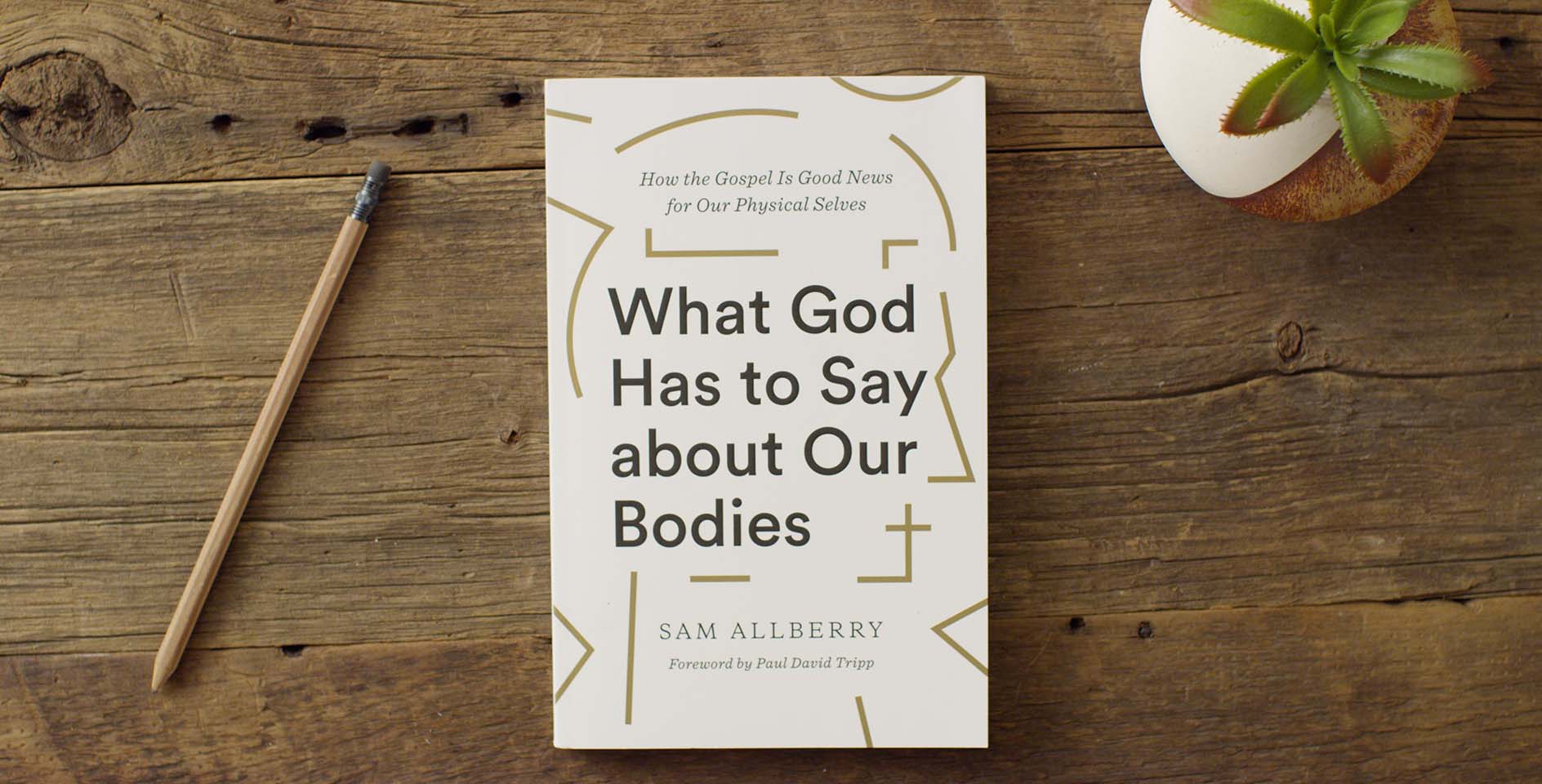There is a rhythm to the account of creation in Genesis 1. The work takes place over six days, with a repeated refrain coming at the end of those days: “God saw that it was good.” God is evidently not inattentive to what he is making. He doesn’t start one aspect of creation and then turn his attention to the next project. He finishes each act, steps back (as it were), and appraises it. As he assesses each day’s work of creation, he can be fully pleased with the outcome. So again and again we read, “It was good,” “It was good,” “It was good.”
That is, until we turn up. At the end of the day when God has made humanity in his image, male and female, he says something different: “It was very good” (Gen. 1:31). The difference male and female image-bearers make to his creation is to lift it from “good” to “very good.” Needless to say, it is not a track record we maintain through the rest of the Bible; but the fact remains, there is a deep fundamental very-goodness to the way God has designed us to be, and our being made as men and women is at the heart of it.
Of course, whenever we talk about God’s design for men and women, significant questions rush to the front of our minds. What exactly does it mean to be a man, or to be a woman? What should it look like? Or feel like? These are not abstract questions. Each of us has some story of how we experience our own sex. Each of us has some sort of instinct about what we are supposed to measure up to and whether we have reached it or remain woefully short of it. Much of how we feel about ourselves, along with our social confidence and our mental health, can ride on this. It matters.
And it is confusing. It feels as though there are so many potential and available answers to those questions, and they don’t cohere. What a man or woman should be like not only varies from culture to culture but enormously within cultures, from one generation to the next and one region to the next –– even from one locker room to the next. I’m not sure I know how to answer all those questions, but I find that two simple observations about the Bible give me the basic coordinates I need to start thinking about it.
More alike than different
The first observation is that the vast majority of what God has to say, he says to us as men and women without distinction. It is obvious to point out, but despite the best marketing strategies from publishers, there is not one Bible for men and another for women. The same Bible is given to both. And all the words within it are for both men and women to read. Even the parts addressed to men are still meant to be read by women, and those addressed to women by men. So whatever differences there may be between us, we must not exaggerate them. We are not different species. It is not the case (to use the language of a hugely popular book from several years ago) that men are from Mars and women from Venus. However much we may mystify, surprise, or delight one another, we are far, far more alike than we are different.
In fact, the very first interaction between a man and a woman in the Bible highlights this very point. We’ve already seen the repeated refrain in Genesis 1 of “It was good,” “It was good,” and finally, “It was very good.” But even more jarring than the addition of the word very is the addition of the word not in Genesis 2. In this close-up account of the creation of Adam and Eve, Adam is at this point on his own. And this time, as God steps back he declares this not good:
Then the Lord God said, “It is not good that the man should be alone; I will make him a helper fit for him.” (Gen. 2:18)
The man on his own is inadequate and insufficient. He needs an appropriate other. “Fit for him” here also carries the sense of “corresponding to him,” someone who will be his match. But God doesn’t then immediately create the first woman. Instead, he brings out various creatures before Adam for him to name. And by naming, he doesn’t mean giving each single creature its own personal name; he means taxonomy –– giving each kind of creature its appropriate name. So this involves carefully examining the nature of each species and kind so that he can give it a proper designation. Doing this only brings home to him that each creature is distinct from him. The conclusion? “But for Adam there was not found a helper fit for him” (Gen. 2:20). The not-goodness of his original situation has not changed. On the positive side, Adam now knows what to call everything; but on the negative side, he is still without a necessary counterpart.
What first leaps out at Adam is not all the things that are different between Eve and him but the very fundamental way in which she is like him. There are differences. He’s not oblivious to that — evidenced by the one-flesh union they quickly enter into. But more fundamental than the obvious differences between men and women is the more fundamental likeness. Our human commonality precedes our sexual difference.
So our shared likeness as human beings is seen in that the vast majority of what God says to us in the Bible, he says to us as men and women without distinction. We’re not directed into separate rooms; we share the same holy Scripture. There may be ways in which we think or behave differently, but this should not be stressed at the expense of how alike we are.
Different and complementary
The second observation is that while it is essential to know that the vast majority of what God says is said to us without distinction, it is not true of everything God says. So while we have obvious differences of biology, the fact that at times we need to hear slightly different words from God indicates these differences extend beyond biology. It does not seem to be the case that, biology aside, men and women are indistinguishable from one another.
How we identify what these deeper, nonbiological differences are requires great care. With an issue so sensitive and far-reaching, we want to make every effort to go only as far as the Bible goes –– no further and no less.
It is very easy for Christians, often without realizing it, to go further than the Bible says. We each have our own deep sense of what constitutes true masculinity and femininity, and we can all too easily assume that sense has come from the Bible, especially if we’re holding it in contrast to what a wider, secular culture around us might be saying. But what seems obvious and instinctive to us about the nature of men and women might reflect our own cultural prejudices more than what the Bible actually says.
We want to say what the Bible says; we also want to say it only to the extent that the Bible says it. Sometimes we can take a genuinely biblical idea and run with it in a way that the Bible itself never does. What we end up saying might not be contradicted by Scripture and may well be consistent with one aspect of what the Bible says, while not actually being biblical. The Pharisees give us a number of examples of how easily this happens. They rightly took the Old Testament law seriously. But they often mistook their application of God’s law for the law itself. So those who didn’t obey the law in the exact way that they did were regarded as disobedient.
I suspect the same often happens when it comes to discussions of what Christian men and women are meant to do or be like. Principles found in Scripture get applied in prescriptive ways that exceed the scope of the original text, and anyone who disagrees is accused not of disagreeing with the application but with the Bible itself. I’ve seen this sort of thing numerous times, particularly in the conservative churches from which I have come. I think of one church where, in mixed prayer meetings, women were discouraged from praying at the beginning because it would discourage men from taking the lead in prayer. I can imagine (just about) this being well-intentioned to start with (perhaps seeking to apply 1 Timothy 2:8 –– “I desire then that in every place the men should pray”?), but by the time I encountered this practice, it had already been hardened into a rule about what men and women should do: men should always be first to pray in a mixed gathering; women should always hold back and wait until the men have prayed first.
So those of us (I include myself) who believe that Scripture teaches that only certain qualified men should serve as pastors or elders in the church need to be careful not to then take this teaching and start applying it to contexts the Bible never speaks to, such as women leading in certain secular contexts. Or those who take the Bible’s teaching to husbands and wives and then end up prescribing from this which spouse should be doing which tasks in the modern home.
Saying what the Bible doesn’t say or overextending what it does say are both forms of adding to Scripture. But we must be equally careful not to subtract from Scripture. And if (in my experience) adding tends to happen more in conservative churches (perhaps an unintended consequence of wanting to take the detail of Scripture seriously), then (also in my experience) subtracting tends to happen more in less conservative churches (perhaps an unintended consequence of not wanting to be bound by rules and conventions that aren’t biblical). Either way, all of us are in danger of both.
The fact is, it is clear from Scripture that differences between men and women are not just physiological. And while we mustn’t over define what these differences are, neither must we deny they exist at all. This is especially important given that it is increasingly common to think that being equal must mean being the same in every respect –– that equality cannot properly exist where there is any kind of difference. But the Bible challenges this way of thinking. Our very difference is what makes each gender distinctly glorious. We can’t simply hope to swap out a man for a woman, or a woman for a man, and assume it will make no difference.
Content taken from What God Has to Say about Our Bodies by Sam Allberry, ©2021. Used by permission of Crossway, a publishing ministry of Good News Publishers.










